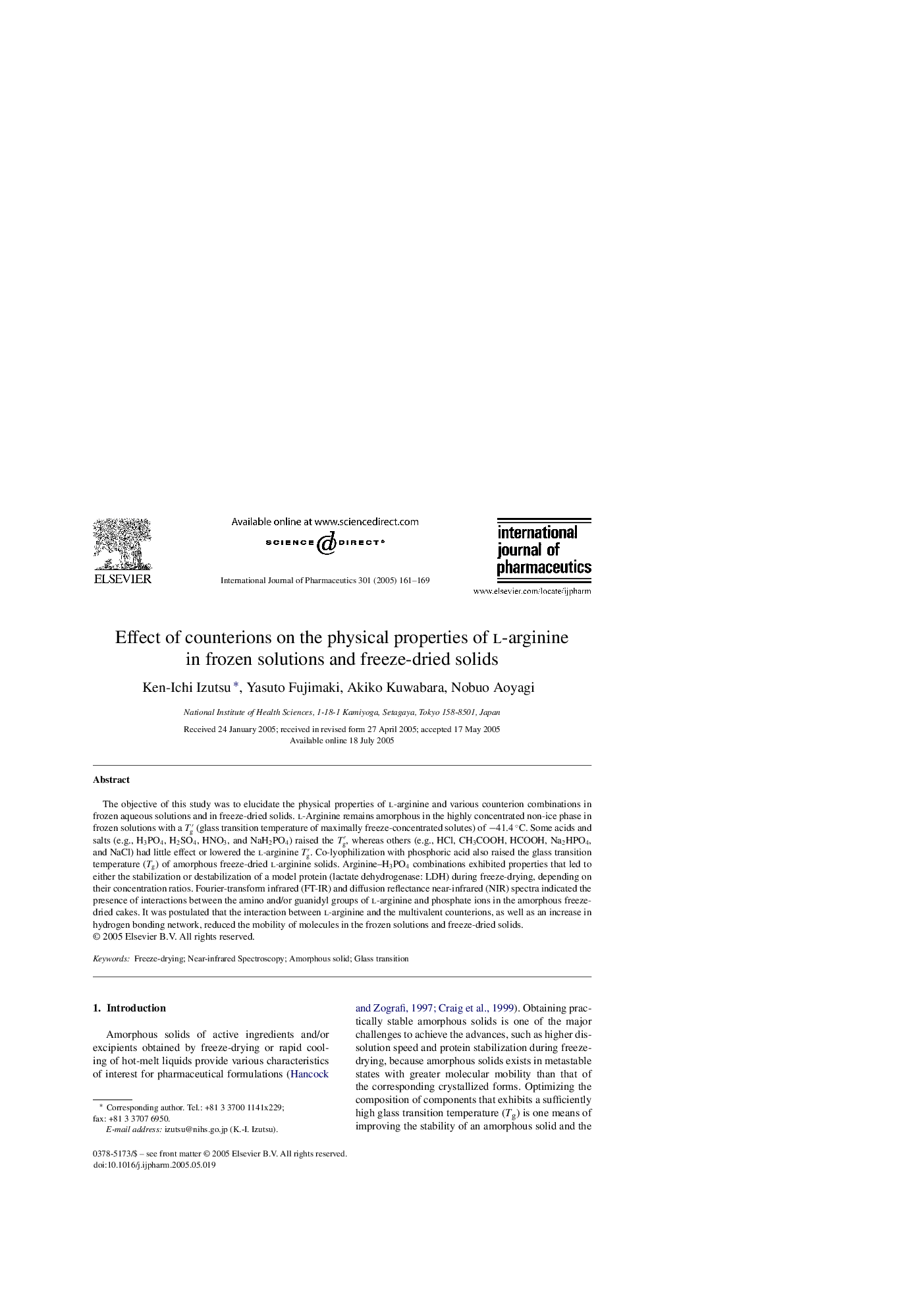| Article ID | Journal | Published Year | Pages | File Type |
|---|---|---|---|---|
| 9918654 | International Journal of Pharmaceutics | 2005 | 9 Pages |
Abstract
The objective of this study was to elucidate the physical properties of l-arginine and various counterion combinations in frozen aqueous solutions and in freeze-dried solids. l-Arginine remains amorphous in the highly concentrated non-ice phase in frozen solutions with a Tâ²g (glass transition temperature of maximally freeze-concentrated solutes) of â41.4 °C. Some acids and salts (e.g., H3PO4, H2SO4, HNO3, and NaH2PO4) raised the Tâ²g, whereas others (e.g., HCl, CH3COOH, HCOOH, Na2HPO4, and NaCl) had little effect or lowered the l-arginine Tâ²g. Co-lyophilization with phosphoric acid also raised the glass transition temperature (Tg) of amorphous freeze-dried l-arginine solids. Arginine-H3PO4 combinations exhibited properties that led to either the stabilization or destabilization of a model protein (lactate dehydrogenase: LDH) during freeze-drying, depending on their concentration ratios. Fourier-transform infrared (FT-IR) and diffusion reflectance near-infrared (NIR) spectra indicated the presence of interactions between the amino and/or guanidyl groups of l-arginine and phosphate ions in the amorphous freeze-dried cakes. It was postulated that the interaction between l-arginine and the multivalent counterions, as well as an increase in hydrogen bonding network, reduced the mobility of molecules in the frozen solutions and freeze-dried solids.
Related Topics
Health Sciences
Pharmacology, Toxicology and Pharmaceutical Science
Pharmaceutical Science
Authors
Ken-Ichi Izutsu, Yasuto Fujimaki, Akiko Kuwabara, Nobuo Aoyagi,
